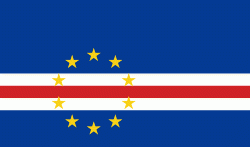Santa Cruz (Concelho de Santa Cruz)
Its economy is based in agriculture, in which rural population produces agricultural commodities for export to larger markets in Praia, Assomada and Fogo. Small market centers exist in São Lourenço dos Órgãos and Pedra Badejo, which act primary as commodity exchanges where subsistence farmers exchange goods as available with merchants who transport and sell goods in larger markets. The primary agricultural productions include fodder (usually in the form of maize stalks), bananas, papayas and coconuts. Prior to 1981 the area also produced a substantial percentage of the island's maize, but the arrival of large-scale international food aid, while vastly improving the region’s food security, made producing foodstuffs unprofitable. Maize and legumes are still the region's primary agricultural product, though 97% is consumed by the families that produce it. The mixture of nitrogen fixing and nitrogen consuming crops reduces the need for chemical fertilizers, allowing small farmers to remain solvent despite little cash income.
The dry-season economy is directed primarily by agricultural cooperatives, which assign stonemasonry, carpentry and other construction tasks through contracts awarded by the local governments. The president of the cooperative acts as a de facto village headman in areas where there are no government representative.
The soil in the region is very fertile (being especially rich in iron and potash), though water is scarce in all parts of the municipality.
Map - Santa Cruz (Concelho de Santa Cruz)
Map
Country - Cape_Verde
 |
 |
The Cape Verde archipelago was uninhabited until the 15th century, when Portuguese explorers discovered and colonized the islands, thus establishing the first European settlement in the tropics. Because the Cape Verde islands were located in a convenient location to play a role in the Atlantic slave trade, Cape Verde became economically prosperous during the 16th and 17th centuries, attracting merchants, privateers, and pirates. It declined economically in the 19th century after the suppression of the Atlantic slave trade, and many of its inhabitants emigrated during that period. However, Cape Verde gradually recovered economically by becoming an important commercial center and useful stopover point along major shipping routes. In 1951, Cape Verde was incorporated as an overseas department of Portugal, but its inhabitants continued to campaign for independence, which they achieved in 1975.
Currency / Language
| ISO | Currency | Symbol | Significant figures |
|---|---|---|---|
| CVE | Cape Verde escudo | Esc or $ | 2 |
| ISO | Language |
|---|---|
| PT | Portuguese language |















